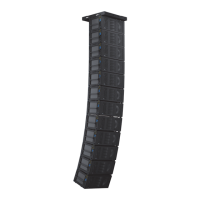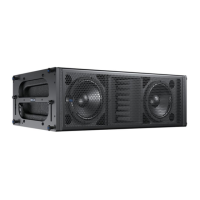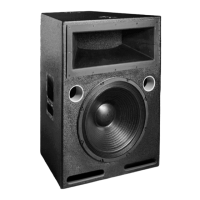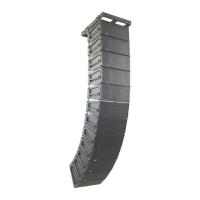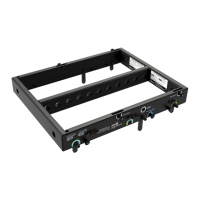13
CHAPTER 4
MICA is RMS-ready and fitted standard with an RMS
communication board installed in its MPW-4/MICA
amplifier. RMS is a real-time monitoring system that
connects Meyer Sound self-powered loudspeakers
with a Windows-based PC at the sound mix position or
other location. Optional RMS software delivers extensive
status and system performance data from every installed
loudspeaker.
RMS allows the monitoring of amplifier voltages, limiting
activity, power output, temperature, fan and driver
status, warning alerts, and other key data for up to 62
loudspeakers without a network repeater. Data is updated
two to five times per second.
NOTE: Optional loudspeaker Mute and Solo
functions are helpful for acoustic setup or
troubleshooting. A jumper must be installed in the
RMS communication board inside MICA’s amplifier
in order to enable Mute and/or Solo functionality;
the software also needs to be enabled for these
functions.
NOTE: MICA is shipped with these functions
disabled. Once enabled, the jumper(s) can
still be removed to eliminate any chance of an
operator error (a muting error, for example) during a
performance, and both functions can be controlled
by software commands in any case. Also note that
RMS does not control loudspeaker volume or AC
power.
Loudspeakers are identified on the network by Node
Names assigned during a one-time “commission” into the
RMS database that resides on your computer (as a part
of the software) as shown in Figure 4.1. This information
is permanently retained on each RMS communication
board and in the computer RMS database unless you
modify it. Loudspeaker View labels can be modified at any
time, allowing you to customize how you view the data. In
addition, any MICA can be physically identified from RMS
software by activating the Wink function — a Wink LED will
turn on the RMS communication board that corresponds to
its Node Name.
Figure 4.1. Commissioning a MICA loudspeaker using RMS.
MICA loudspeakers are identified using the RMS software
by activating the “service” function; an icon will show up on
the RMS screen corresponding to its Node Name (Figure
4.2). This makes verifying Loudspeaker View titles and
Loudspeaker Field labels easy, using the Wink or Service
Button commands.
Figure 4.2. MICA RMS icon
UNDERSTANDING THE USER PANEL
MICA’s MPW-4/MICA amplifier contains an RMS user panel,
as shown in Figure 4.3.
Active
Low Ch Limit
High Ch Limit
MICA
2 +
Earth / Chassis
1
Case
220K �
ESD
3 -
10K
�
Balanced
1
2
3
1
3
2
Loop
Input
Network
S
e
r
v
i
c
e
W
i
nk
R
e
s
e
t
A
c
t
i
v
i
t
y
Remote Monitor System
PUSH
Figure 4.3. The RMS user panel
The RMS user panel has three LEDs and two buttons. The
following sections describe their functions.
NOTE: The LEDs and buttons on the user
panel of the RMS communication board
shown in Figure 4.3 are used exclusively by
RMS, and have no effect on the acoustical and/or
electrical activity of the MICA loudspeaker itself
— unless MUTE or SOLO is enabled at the board
and from the RMS software.
CHAPTER 4: RMS REMOTE MONITORING SYSTEM

